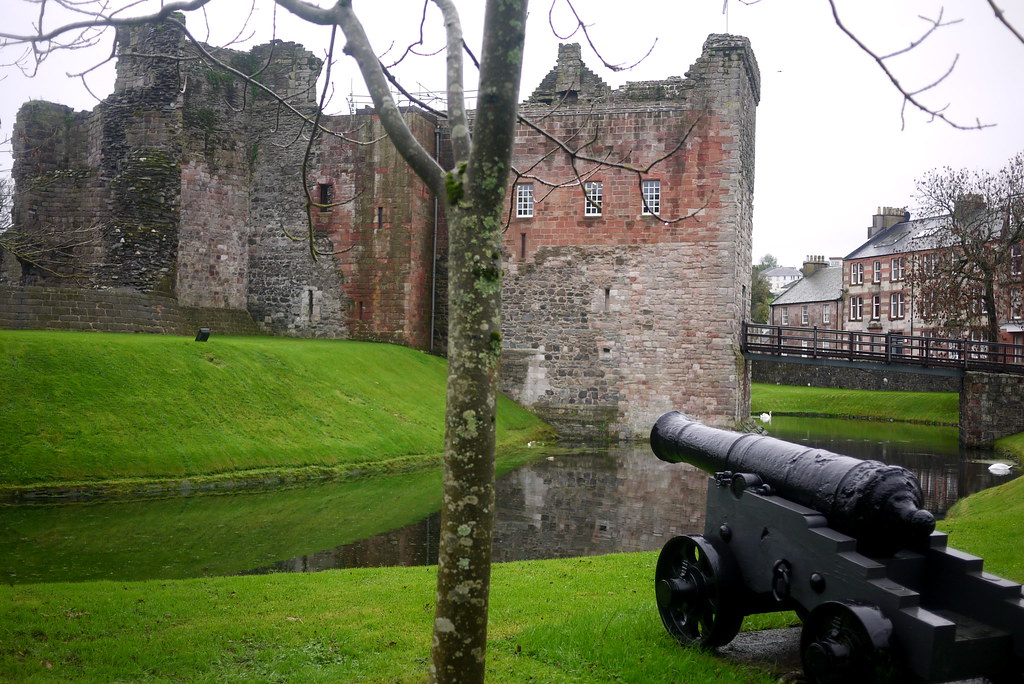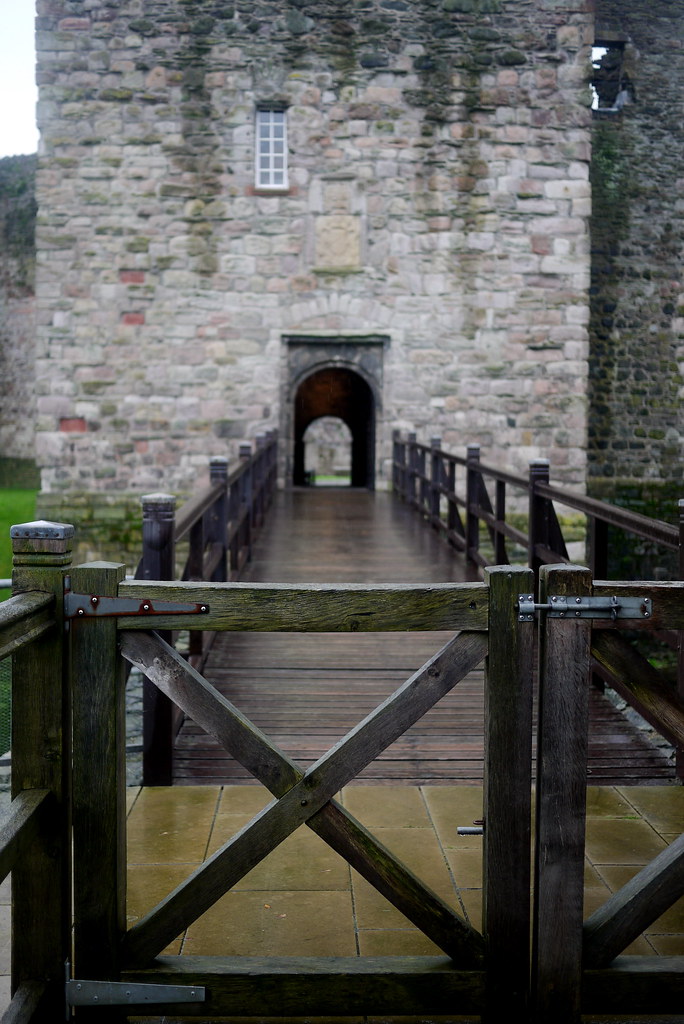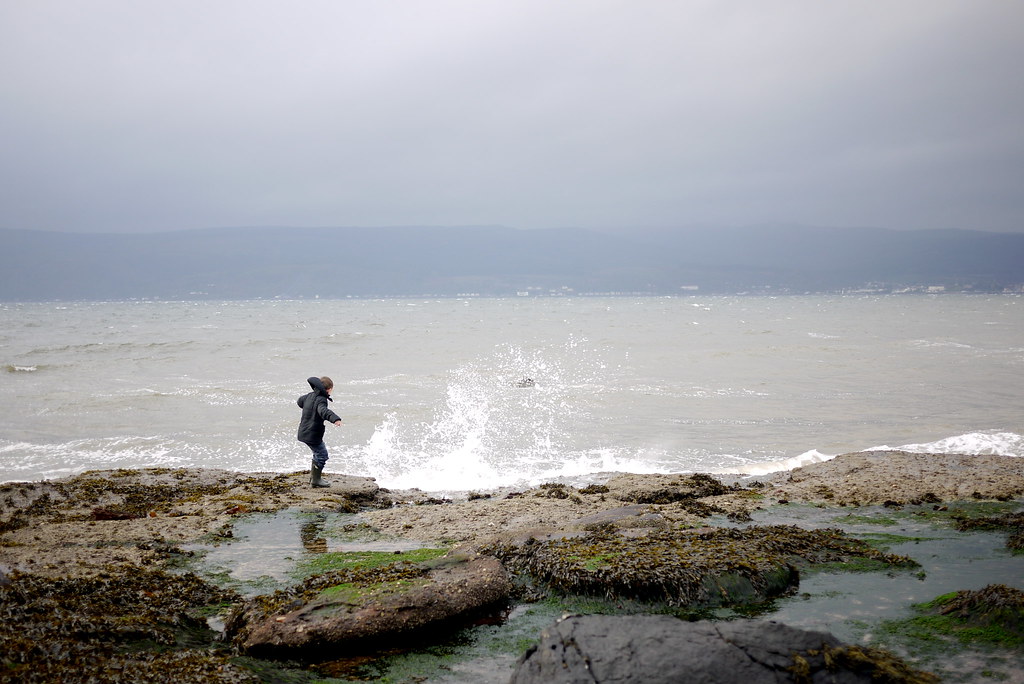Continuing on from the last post, we also had a trip to St Mungo's Museum of Religious Art and Life in Glasgow. For most of my friend's stay the kids were off with their grandparents, but by this time they'd come back home and so they came out with us, because I decided it would be educational, dagnabbit.
Seeing as we have no separation of church and state in the UK, and we are officially a Christian nation, schools are legally obliged to incorporate some sort of religious or spiritual element each day (though you can opt out if you so wish). The religious or spiritual element doesn't
have to be Christian but in most schools it is, either by majority rule or because the school is church run. In the larger urban areas you can find a few Muslim-run schools too.
When I was at primary school we said prayers and sang hymns every day, at assembly before the school day started. Many schools today tend to ignore the law and not bother, in our increasingly secular society (so the tabloids say, anyway). At the school that my kids go to, they don't say daily prayers or sing hymns, but they do have Christian services at Easter, Harvest and Christmas, and on a couple of other occasions too. As we're not a Christian family (and my husband is a staunch atheist), we choose to opt our children out of the services and any forms of worship - hymns etc - but we don't opt out of religious education. Schools should be about education, not indoctrination, we say to the head teacher. And that's fine by them. There's not a lot else they can do, really. My youngest niece, on the other hand, goes to a Catholic high school and is frequently told that abortion and contraceptives and sex outside of marriage are wrong and will send her to hell. Or something. Personally I think that's shocking, but at least my niece has a good head on her shoulders and has bothered to educate herself where the school has failed. But anyway...
By not having the kids participate in the Christian services, the downside, of course, is that the kids don't have any practical experience of what most of their friends have, and therefore very little real understanding of Christianity or other organised religions at present. We live in a small village so the activities on offer are generally run by the Church. Most kids go to Sunday School and that sort of thing. Between my husband and I, I'm the only religious or even vaguely spiritual one, and we have an agreement that we won't 'force' religion on the kids but let them choose to explore or commit as they so wish. So much of what I do with them and blog about here doesn't really involve their worshipping gods, but participating in cultural practices, learning about the seasons and teaching them why we celebrate the first fruits, the coming of winter, then spring, and so on. They've picked up giving offerings themselves, to 'say thank you' when we go to the beach and so on, and I answer any questions I have as clearly as I can.
But as far as organised religion is concerned, they don't have much of a clue. They get a little confused when one of Rosie's friends says Jesus is going to give him a little brother soon, because that seems a bit odd to them. Jesus is a baby in a stable! And we all know babies can't do much. The bit where Jesus grew up and then died on the cross is still a little fuzzy, apparently. But they're still young - only four and six, so there's plenty of time yet.
Tom, who's six now, brought a reading book home from school the other day, for his homework, and it was about a boy getting ready to go to mosque with his grandparents. I asked Tom if he knew what a mosque was, and he said he didn't. "It's a bit like a church," I said. Then it occurred to me that he probably didn't really know what that was either, so I asked if he knew what a church was.
"It's where the big clocks are?"
Ummmmm. Weeeeellll...technically I suppose a lot of churches do have a lot of clocks on their towers. But it occurred to me that perhaps the kids could do with a little bit of religious education. And my good friend has a degree in Religious Studies and I did it as an extra option in my first year of university, so I figured we could explain a few things between us while we were at the museum.
There are lots of different religions represented there, but mostly concentrating on the religions that can be found in Scotland today - Christianity, Islam, Judaism, Hinduism, Sikhism, and Buddhism. There were some historical displays - a little bit of ancient Egyptians - and some others like Aboriginal and African religions, too. Notably nothing of a neopagan flavour, but you can't have everything can you?
The museum catered well for the children, lots of stuff for them to do, so they were well entertained. We got to learn about Shiva, Lord of the Dance:
And tried to see how easy that stance was, to get the kids involved and make it seem more tangible to them. We decided the extra arms were probably necessary for balance, for one, but also explained to the kids why Shiva was standing like that (the dance of creation), and was standing on what appeared to be a baby (a demon of ignorance, actually).
There was also Ganesha:
And the Bodhisattva Avalokiteshvara (I think):
And rather a lot about Irish Catholicism, which inevitably involves St. Patrick: not the most popular of people in some circles. But he's got some very shiny relics associated with him.
And this one kinda looks like he's making something of a rude gesture, at a glance, suggesting that he's probably not all that fussed about opinions. (Sounds about right to me). Yes, his hand is actually in there. Supposedly. It's one of his reliquaries. I think there are reliquaries of his jaw and tooth as well, somewhere.
This one is allegedly the reliquary for his own bell:
Which in those days would have looked something like this:
You wouldn't ring it, ding-a-ling, but hit it with a stick (sort of thing).
And of course, we can't talk about Ireland without:
Although unfortunately the room it was in was really dark and it's not the best photo. Running after children, and all that, doesn't help with setting up the best shots.
The cathedral precinct itself is beautiful; the cathdral has a bright green, copper roof, and it's thought to stand right where St Mungo himself finally settled:
The cathedral is right by a stream, and it's said that Mungo (also known as Kentigern) would run into the stream every morning, no matter the weather, and sing the 150 psalms of David, then get out and dry himself on a rock. The stream is now covered by a culvert and there's a road running over it, and on the other side of the stream/road there's the Grey Rock, which is home to Glasgow's Necropolis - a fantastically gothic place, full of funerary monuments of Glasgow's richest and greatest from the city's nineteenth century heyday:
(These pictures are from previous visits). And if you're a Doctor Who fan, don't blink:
And that was that for the day, before we had to get to the station and see my friend off for her journey home. I'm kind of doing this all out of order, so next up will be our first day out, a trip to the Isle of Bute.





























